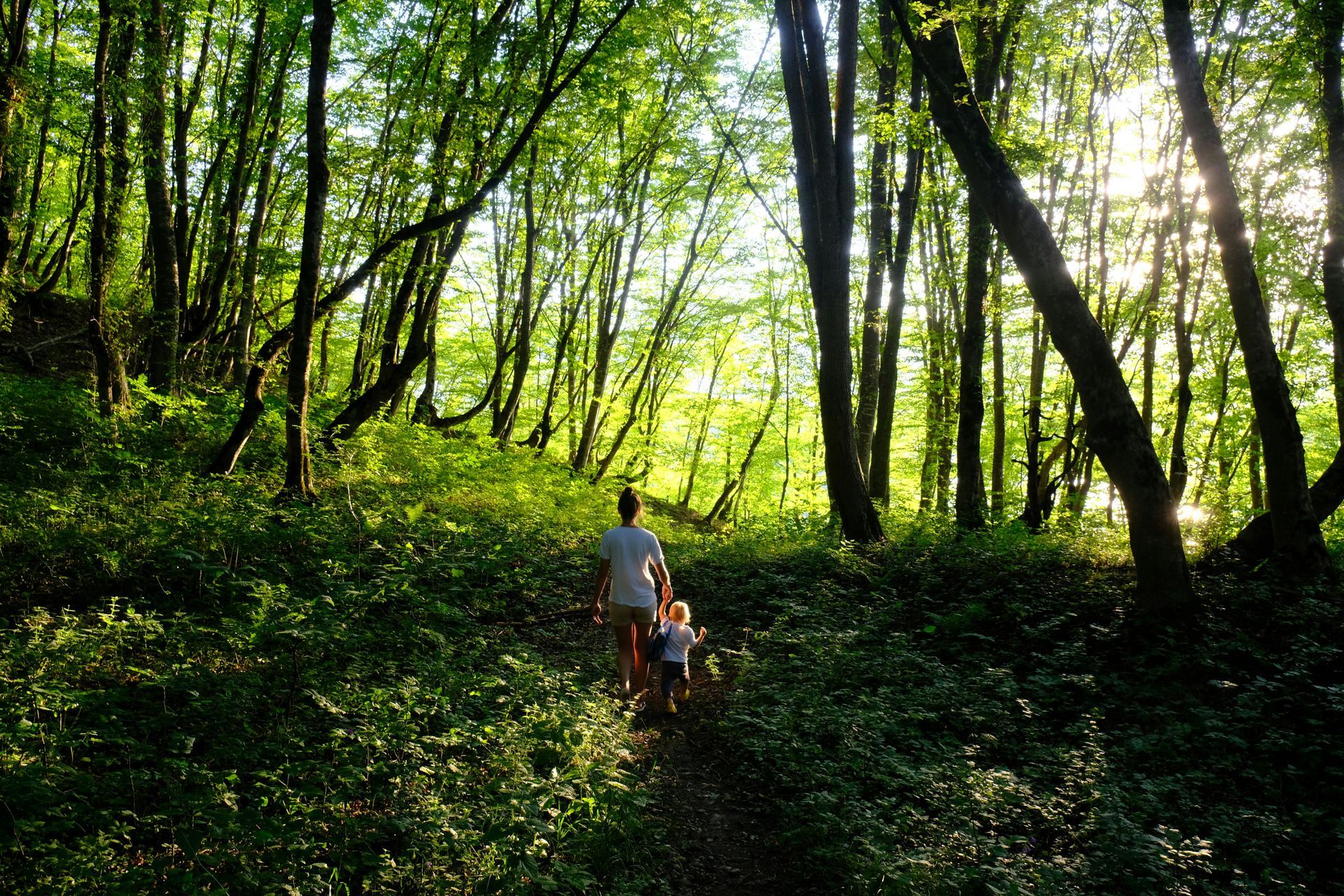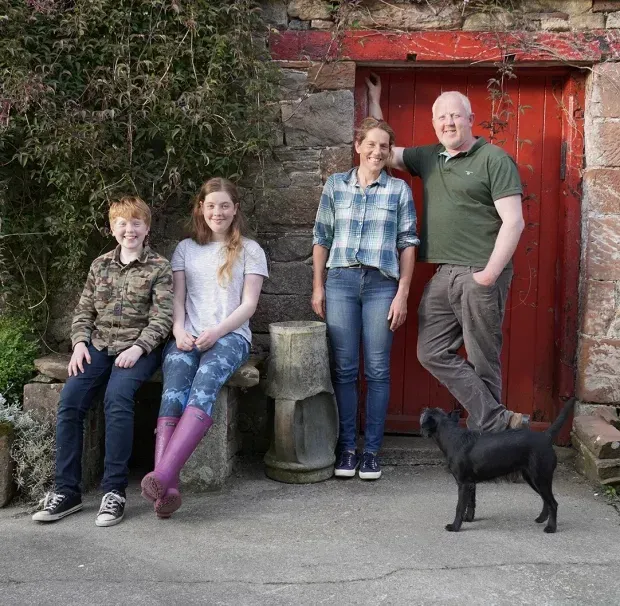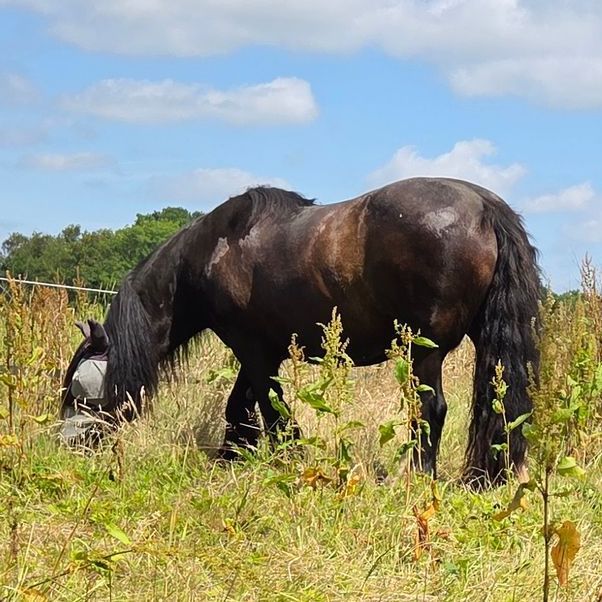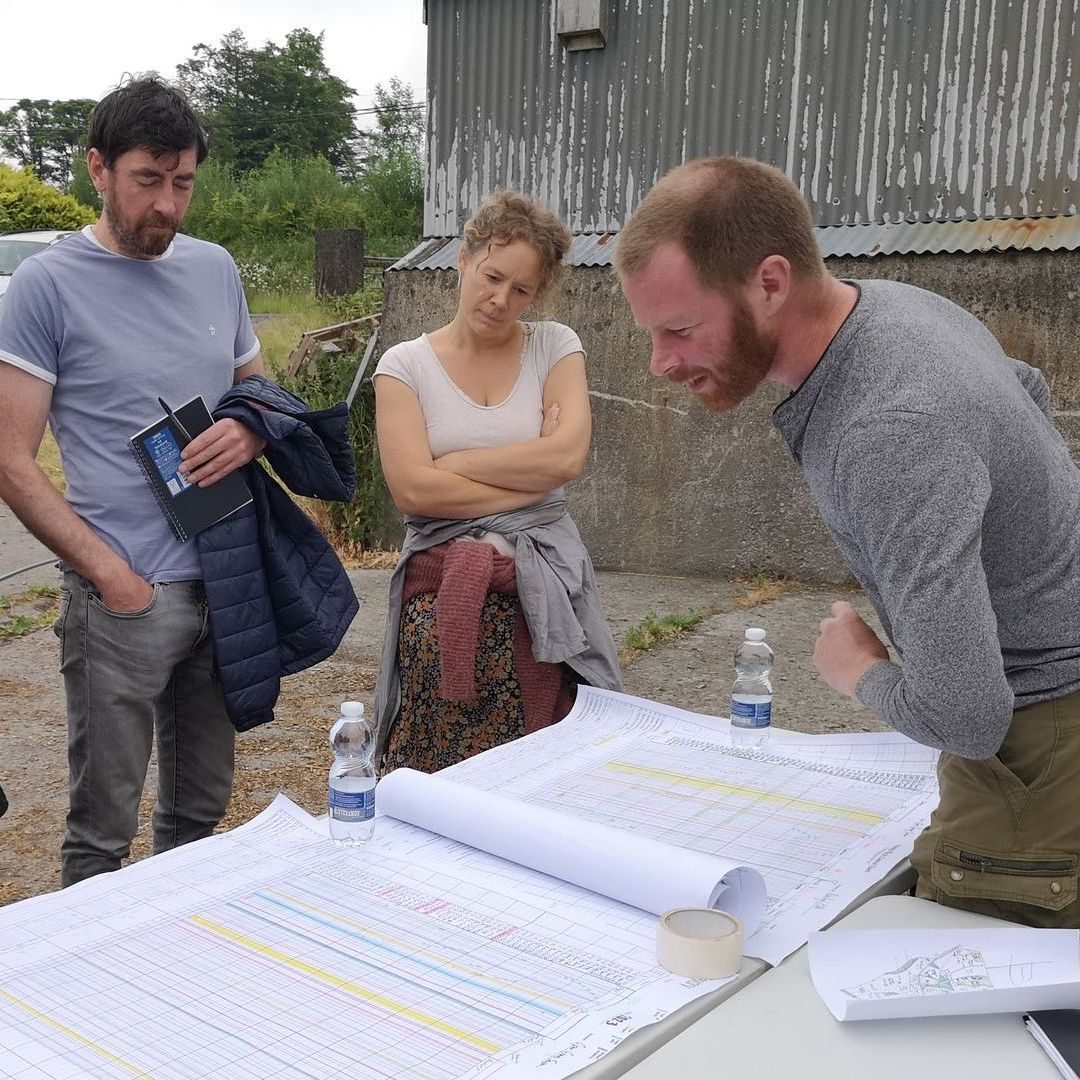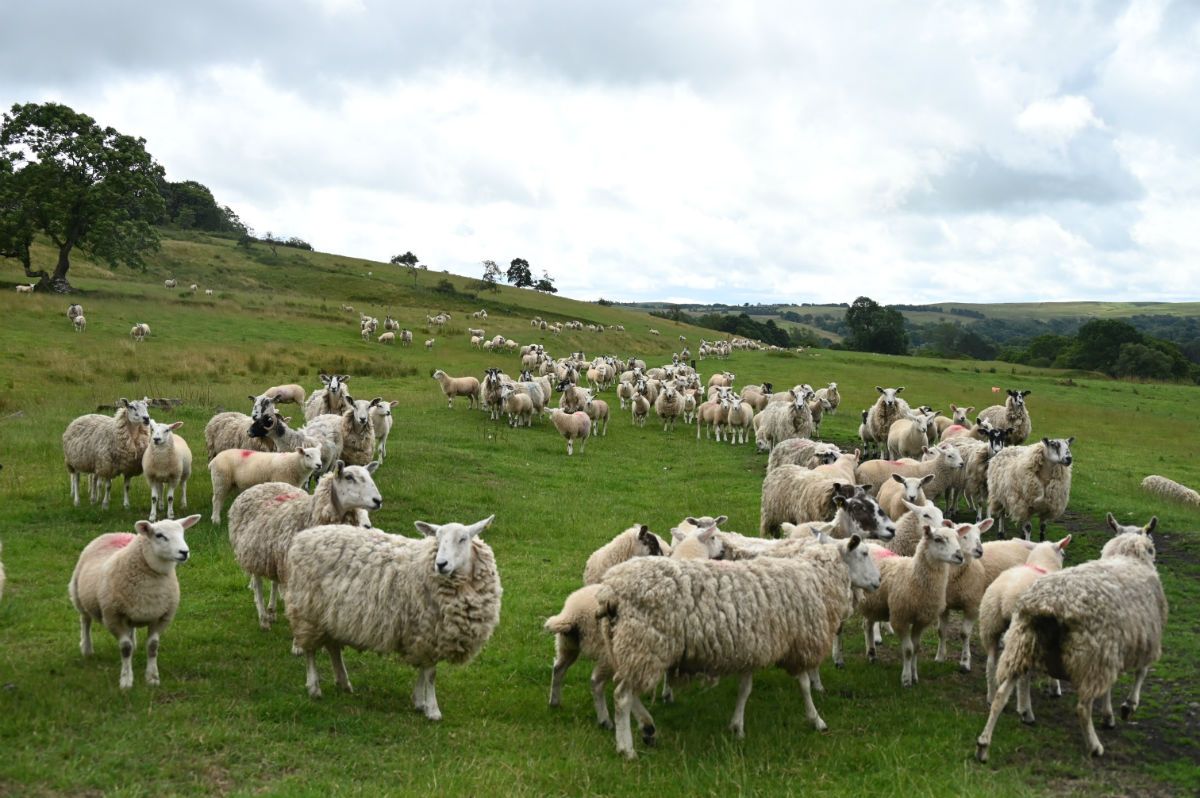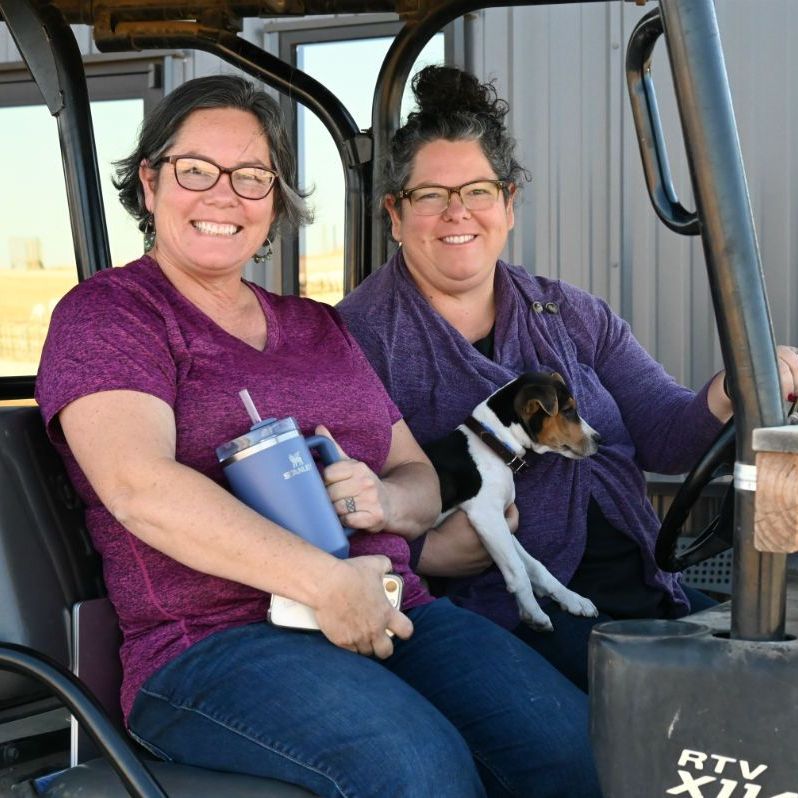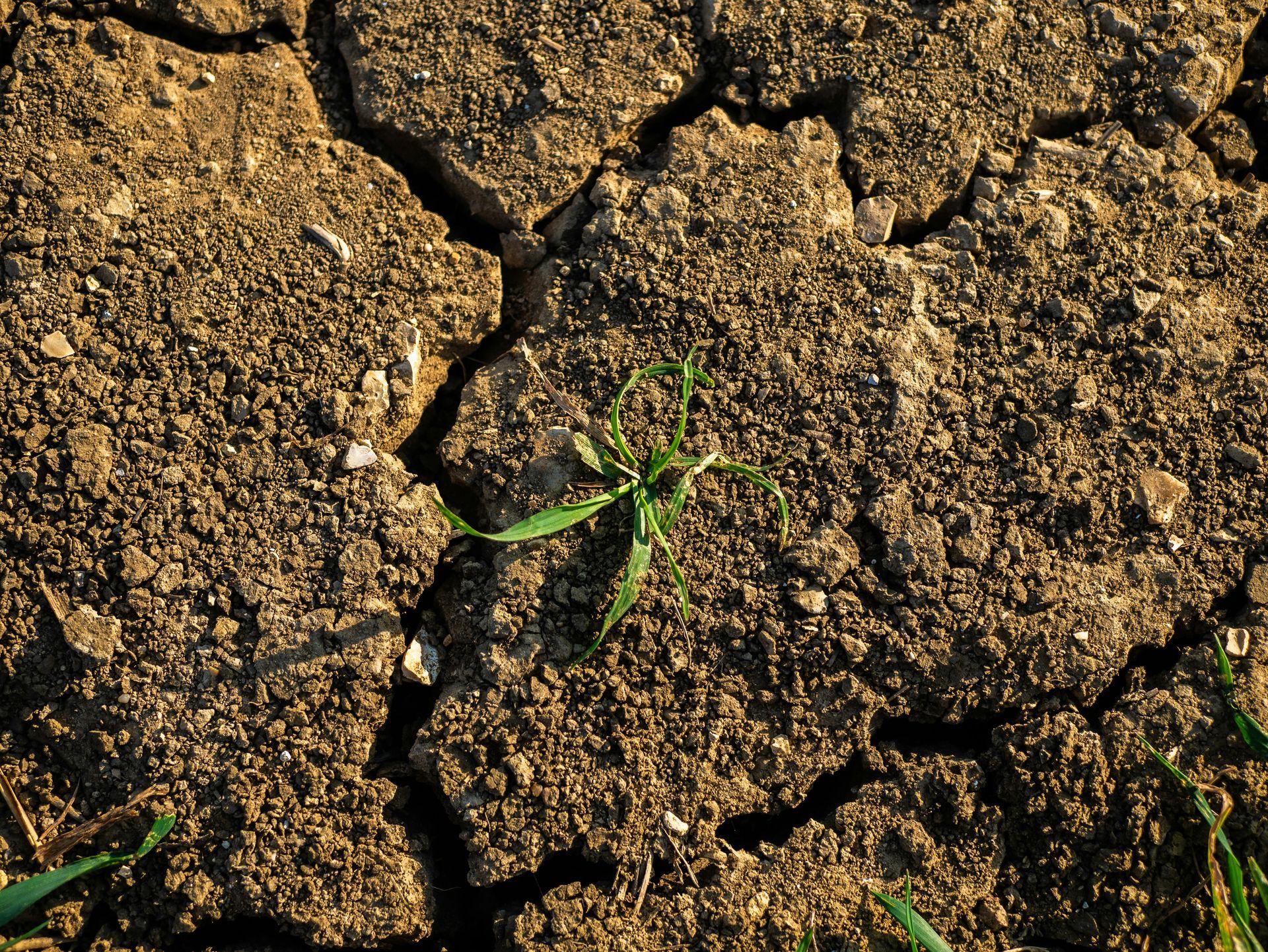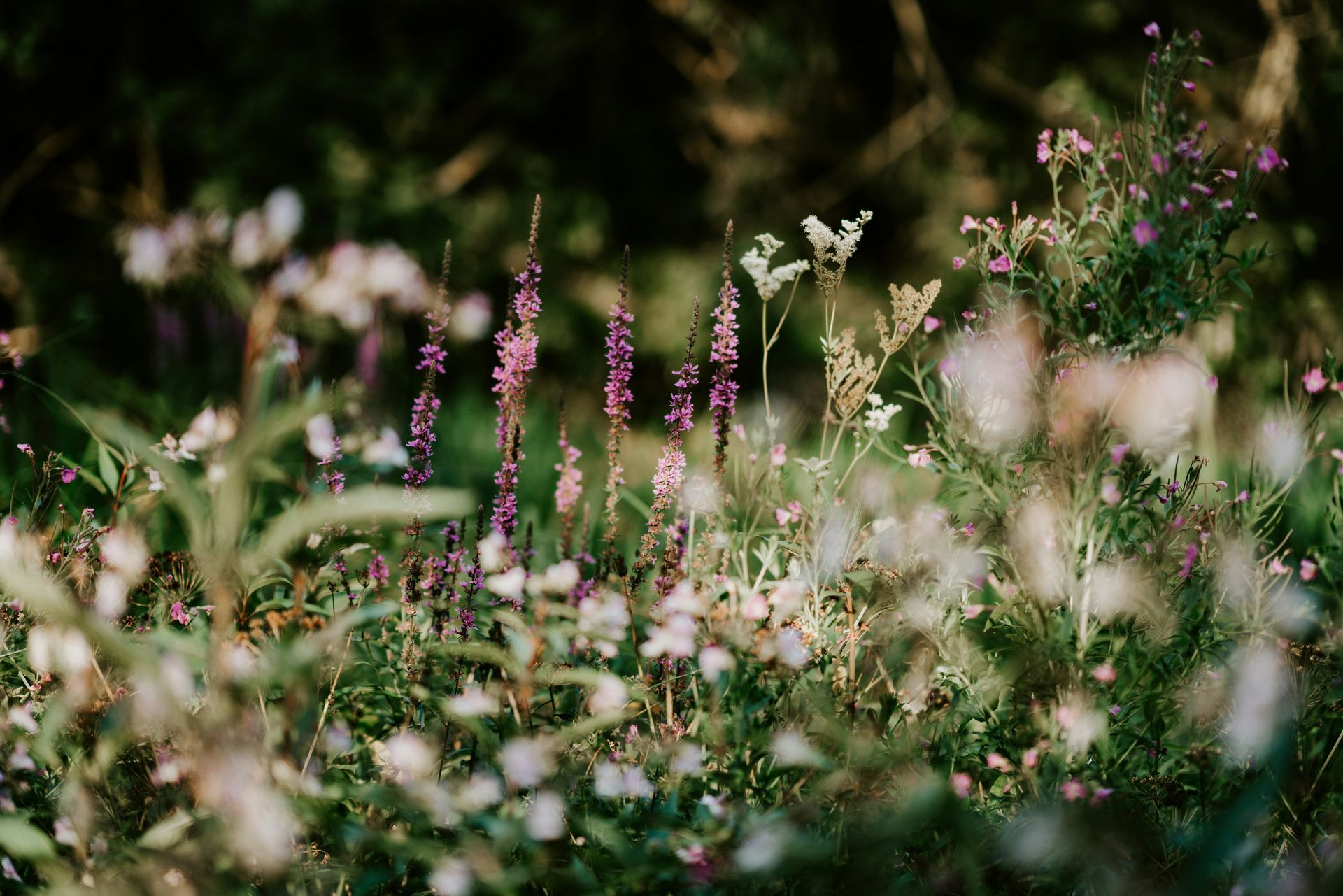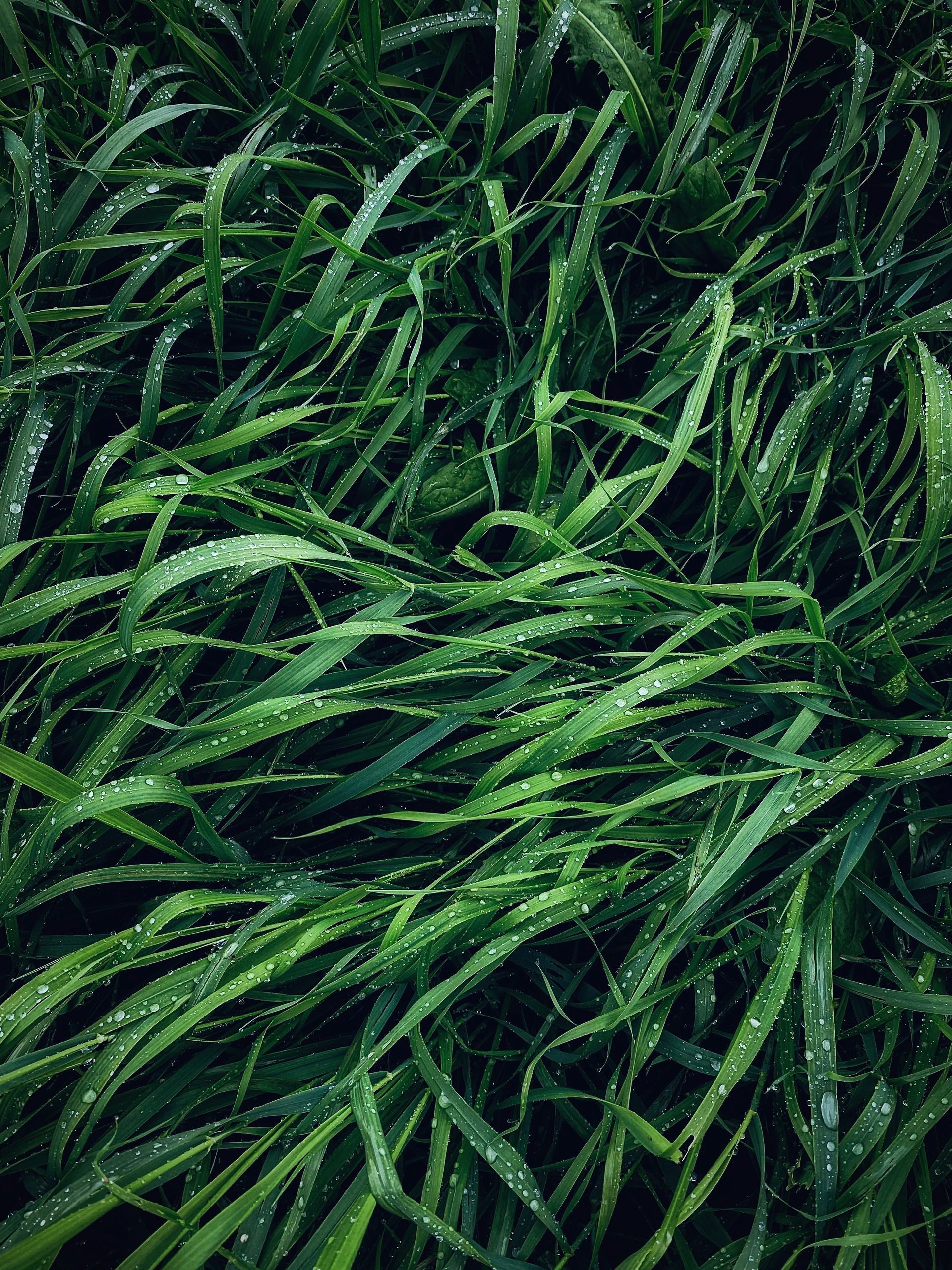Ecological Literacy at Old Hall Farm
There were several eureka moments that led to our change in farming system. One sticks out in my mind particularly – the day we watched our top soil blowing away and realised that a sight my husband had witnessed every year of his farming life, could not be repeated.
-- Rebecca Mayhew

We want to thank Rebecca Mayhew for sharing the presentation she gave at CLA's Towards Net Zero Conference, the 2nd of December 2021.
Good morning, and thank you for inviting me to speak today - it is an honour to be asked to contribute, particularly at such a key moment in time for the agricultural sector.
Our History
Our farm is in south Norfolk – 500 acres in total – some light land but mainly heavy clay. It’s a family farm – I’m the daughter in law, and I used to be a surveyor and auctioneer before joining the business 5yrs ago – my husband has always farmed, and my parents in law are still involved in the periphery.
We used to farm very conventionally/intensively, depending on your point of view, on both the arable and with indoor pigs – finishing 10,000 per year – fed largely from crops grown on the farm.
We currently operate a:
Raw Jersey dairy keeping cows and calves together for 6-8 months – fully pasture fed.
We sell raw milk, cream, butter, yoghurt, ice cream, fudge and ghee and started our self service shed with 3 milking cows in 2017. We’re now milking 40 Jerseys once a day – everything is sold direct to the end consumer including Michelin starred restaurants in Norfolk and London.
We also produce native beef crossed over the Jerseys plus rare breeds including Riggitt Galloway, rare breed pigs, sheep, and goats (all for meat), plus pastured chickens for eggs and soon for meat as well.
Our Farm shop, butchery, café, and vineyard has been in place for 2.5yrs and in total we now employ 24 people plus part timer’s.
We’ve undergone huge changes across the whole 500 acres, using the CSS to help us, for example with legume and herb rich pasture for the cattle, enhanced over wintered stubble for the arable plus nectar mixes and wild bird food strips creating wildlife corridors across the farm.
On the arable side we’re using pasture cropping to help build organic matter, sequester carbon and increase biodiversity and biology. With enhanced overwintered stubbles the land is rested for a year after harvest, then the cattle come in to eat any natural plant regeneration in the autumn and spring prior to cropping before direct drilling.
In January 2020 we undertook a HM course and if this isn’t something you’ve looked into I can highly recommend it. You will require an open mind, but the lessons that we learned during that course have helped us infinitely with our business and not just on the farming side.
Our Holistic Planned Grazing strategy means that we have daily moves for the dairy cattle and moves every 3 days for the beef cattle. Our grazing strategy is based around leaving the maximum rest time for each paddock to enable maximum regrowth, increase biodiversity, and sequester carbon. There’s a bit of a theme here. To give you a bit of context, there are 250 acres of grazing in total, split into around 80 paddocks. We do a lot of walking, but it’s a great way to get a feel for the land and what’s going on on the farm.
Guiding Principles
There were several eureka moments that lead to our change in farming system. One sticks out in my mind particularly – the day we watched our top soil blowing away and realised that a sight my husband had witnessed every year of his farming life, could not be repeated. Top soil – if you try to buy it in it costs a fortune, and yet most of us accept a significant loss of top soil every year, along with carbon into the atmosphere.
Once we started down the rabbit hole, lots of other things asides tillage had to go, including of course our chemical dependency. We have not now used any artificial inputs on the farm in 3 yrs. Lots of carbon saved there. If you haven’t heard about the shikimate pathway you really ought to seek out research by a gentleman called Graham Sait. The truth about what roundup does to plants, and subsequently us, is quite disturbing.
When we started our business we weren’t fully pasture fed in the dairy – what lead us to this was our accountability to our customers when they asked what the cows were eating. Once you look at the label on the feed bag, and follow the logic regarding energy used to make it, a diet with soya and non UK grown ingredients is hard to defend. I decided that if I wouldn’t eat soya as part of my daily diet then I didn’t want the cows to either.
You can link this back to chemical inputs - if EVERY chemical used in the growth of all food consumed by us humans was listed on the back of the packaging, would people still want to eat the food? These inputs of course contribute to being net zero or not, as the case may be.
Simply put, We are, what they eat. If our cattle for example eat a varied diet full of different species of plant, there is a huge improvement in the nutritional content of meat and milk in terms of conjugated lineloic acid and Omega 3, which are beneficial in terms of cancer, diabetes, depression, Alzheimer’s and heart disease to name but a few.
One of our key areas of focus is soil health – bear with me and keep peeling back the layers of the onion.
If the soil that grows the plants which we and our animals eat is healthy, then our food will be healthy, as will we, and the planet.
This is where the cattle and other animals once again come into the system, and the withdrawal of chemicals. Our soils cannot be healthy if we continue to farm as we currently are across the globe.
Biodiversity is crucial. Monocultures are suicide. If it’s good for us to have a varied diet then the same logic follows on for our stock, our soils, and our wildlife.
When it comes to carbon sequestration and smashing our net zero targets, we have to keep the ground covered. Not only will we protect the health of the soil, but by keeping living roots in the ground we can draw down carbon, significantly reduce erosion and flooding, and improve soil health.
Significantly, it’s not what we produce but how we produce it that ultimately makes all the difference. You have I’m sure heard the phrase “it’s not the cow, it’s the how”? The same goes for every aspect of agriculture.
Using holistic management principles we seek to look after the water cycle, energy flow, community dynamics (plants, animals and people), as well as the mineral cycle. Decision making which degrades any of these subtracts from what we are trying to achieve which is health soil, healthy animals, healthy plants, healthy people, and a healthier farm.
Carbon sequestration I’ve mentioned a few times – this is essential to achieve and go beyond net zero. If we build soil through our farming practices then the potential for sequestration of carbon is unlimited – don’t let anyone talk to you about maximum percentages of organic matter (carbon) in soils – it’s all about increasing volume. It’s more simple than any of us care to think.
Faith is important – it has been a bit of a leap of faith to get us to where we are, but there’s so much at stake there is no choice but to accept that nature works, so we have nothing to lose by working with nature and biology to improve everything that we have under our control.
High Points and Challenges
Direct selling has been very eye opening – admittedly it’s not for everyone, but I believe that by talking to people and not corporations that we have a better idea of what YOUR and my end consumers actually want to eat than any of the big retailers.
We have seen huge changes in our farmed landscape – none of them negative. The farm looks amazing, and is more buzzing with life than I’ve ever known it. Even the arable land.
By ensuring our animals have a more varied diet, we’re enabling them to live to as natural a lifestyle as they would without our interference and as such their resulting milk/meat/eggs is better for us. They’re more resilient and we become so by association.
Monocultures of livestock are no better than monocultures of crops.
The pandemic has made life for our small, and relatively new business rather “interesting”. Traumatic even. Comforting people who cried with relief that we were able to supply fresh milk, eggs and bread is not something I’ll ever forget.
As a collective, we do need to make the most of the renewed interest in food and supply chains – my generation has never worried about where their food comes from, but in the future, I suspect that this will be more and more common an occurrence. Let’s make sure that the food we produce is as good as it possibly can be, with as little energy and carbon (if that’s the metric that you choose to use), being wasted as possible.
Trying to Keep Up
We’ve been rather busy since we opened the business 4 years ago. It feels like there’s always more to learn. Sometimes it’s daunting, but most of the time it is exciting.
Sometimes, when I look at what our children might have to face as regards climate change it’s scary, but if we don’t grasp the nettle now (and yes we have lots of these on our farm), and start to deal with what’s under our control to make positive changes, then they’ll always regret it.
A point of interest - the Japanese word for opportunity is the same as their word for crisis – there are two sides to the same coin, and in the Ag sector we have to learn how to look at things differently.
Time and money – never enough of each, but in that we’re no different to any other farm….
If you do decide to change your farming practices, and make no mistake – you must, I can’t recommend doing everything as quickly as we have – we lost our rose tinted glasses that hid what we were doing to the land and the soil very quickly. Take smaller steps – send your soil/farm a memo – each improvement will be significant in it’s own way. Take an area of your land and experiment – you’ll always learn something. What harm could it do?
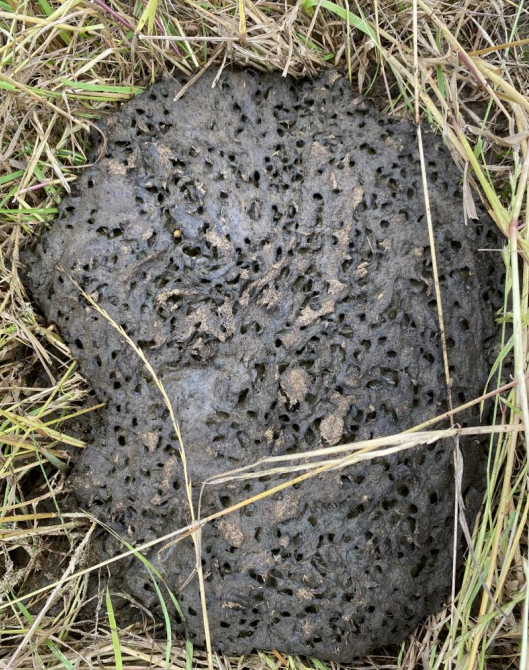
Ecological Literacy (we spend a lot of time looking at cow pats)
We HAVE to produce nutrient dense food from healthy ecosystems – I hate to mention the C (Covid) word, but think how our bodies response to the pandemic would have been improved if we were all healthier.
Carbon is life. If you increase biodiversity you draw down carbon.
Draw down. It’s that simple.
Not just with tress (yet another monoculture). Biodiversity of plants and animals.
I’m going to be provocative and say that Net Zero isn’t good enough. We need to go beyond this to ensure the survival of the human race in some guise.
The same thinking that got us into this mess isn’t going to get us out of it. We need to use our imaginations and think beyond what we’re told is possible by those who are ALWAYS trying to sell us something, or control us.
Don’t stay stuck in a rut – to achieve and exceed net zero targets we need to get out of our ruts – they’re coffins with no ends.
Conclusion – what’s important?
Soil, water, food, people. Everything else is just background noise.
This is the micro and the macro. Holistic thinking to encompass all of these points is crucial.
The aim towards net zero is admirable, but we have to go beyond this. The failures of COP’s 1 to 26 cannot be allowed to continue.
Agriculture is NOT entirely to blame, but we have SO much power to be the difference, and we cannot let this be taken away from us.
Net Zero is part of a much bigger picture. Of climate change. Of our continued existence on this planet. When our children, when YOUR children ask “what did you do to make a difference” – let there be a jolly long list.
To end, I’ll borrow some words from Wes Jackson who wrote “Becoming Native to this Place”:
Since our break with nature came with agriculture, it seems fitting that the healing of culture begin with agriculture, fitting that agriculture take the lead.

